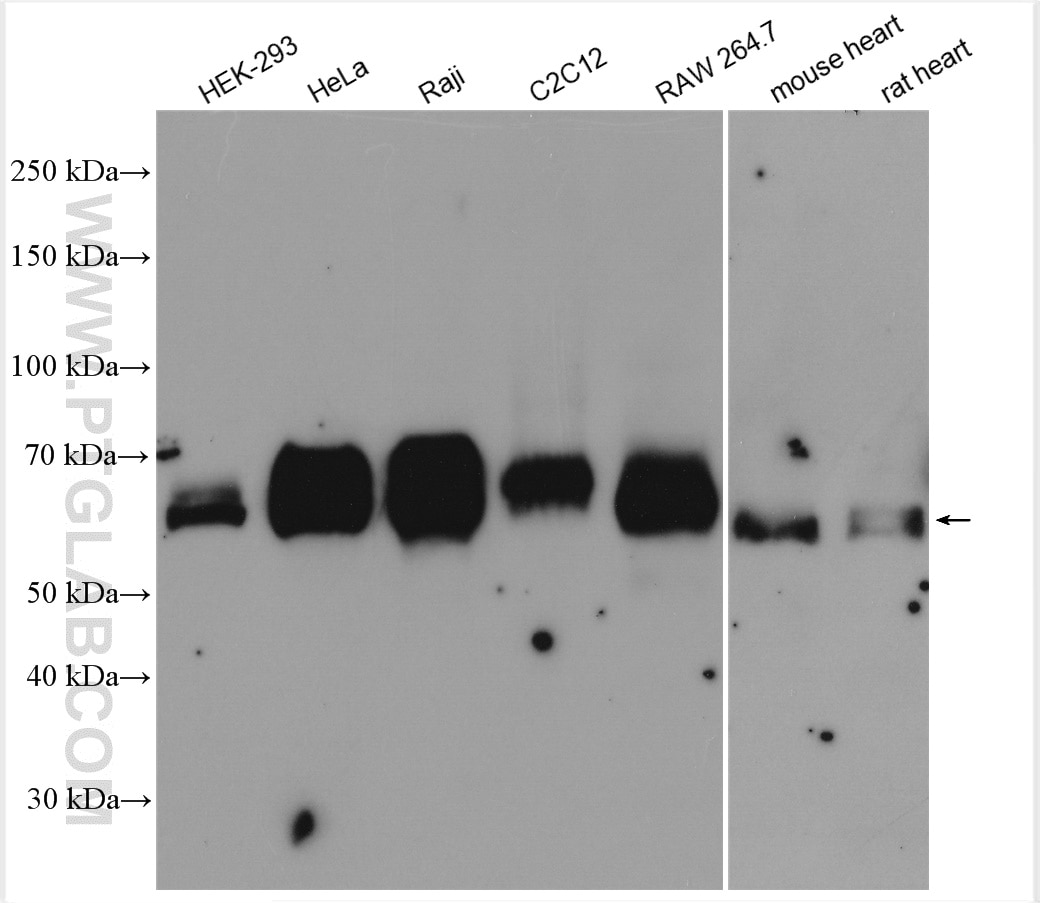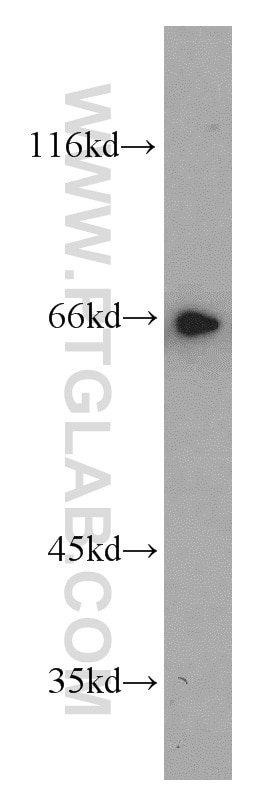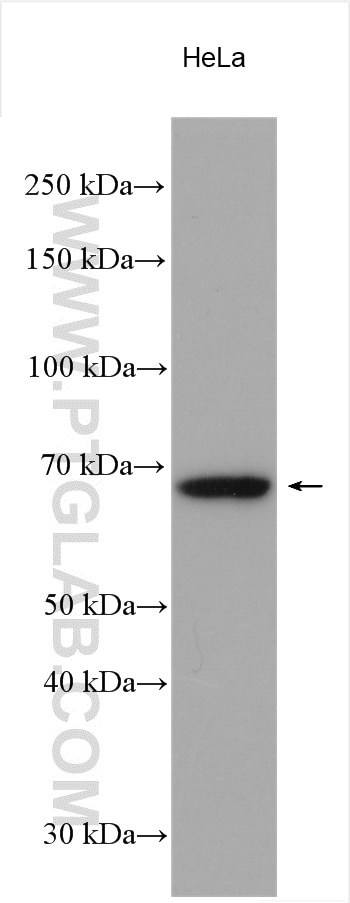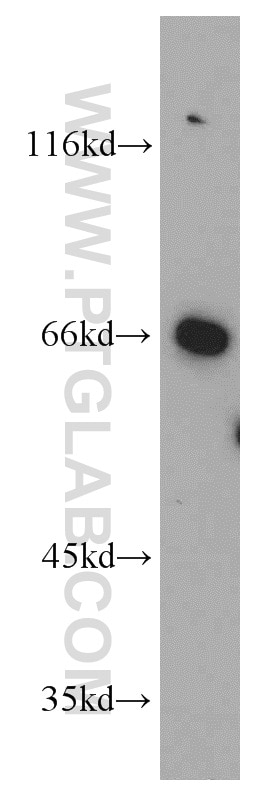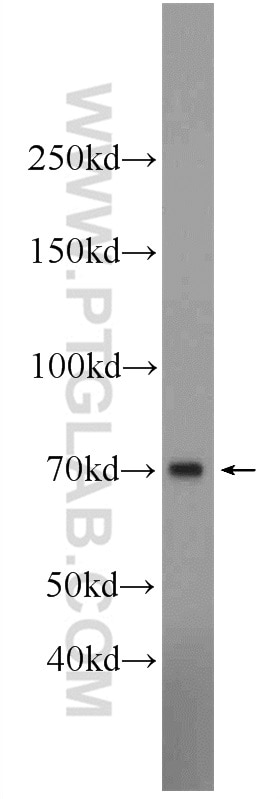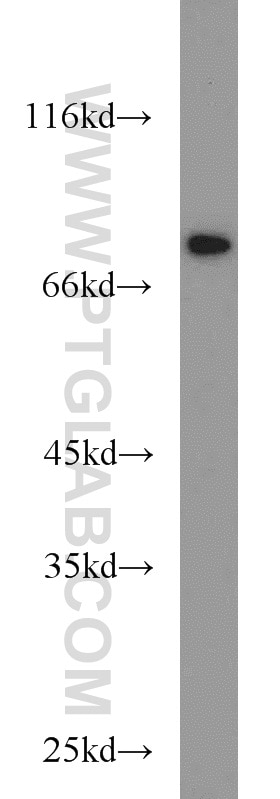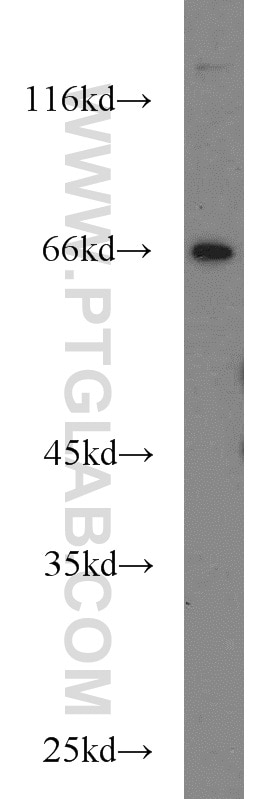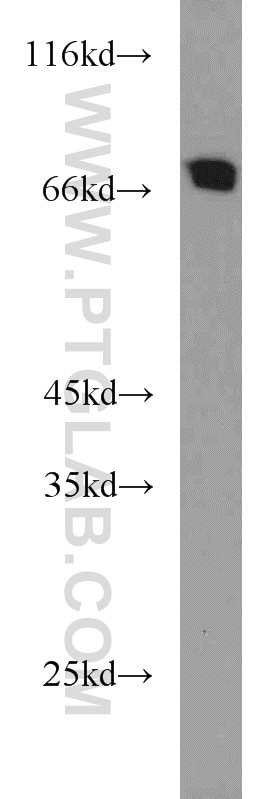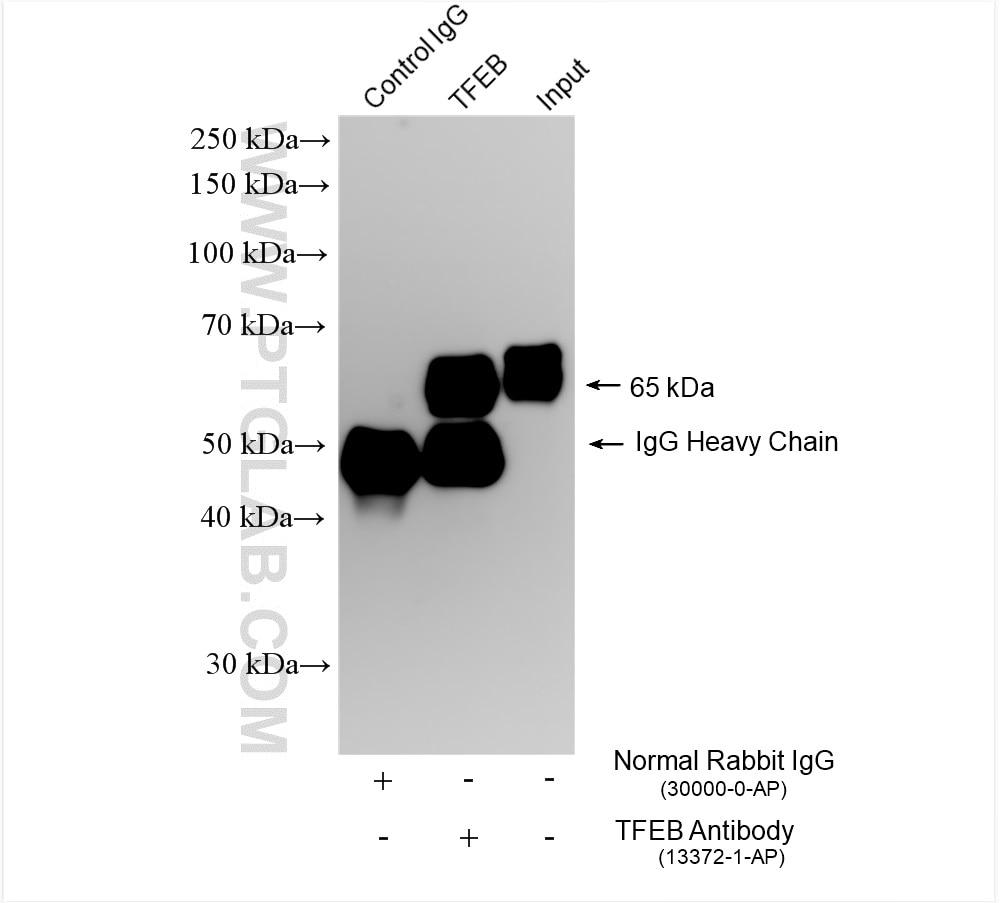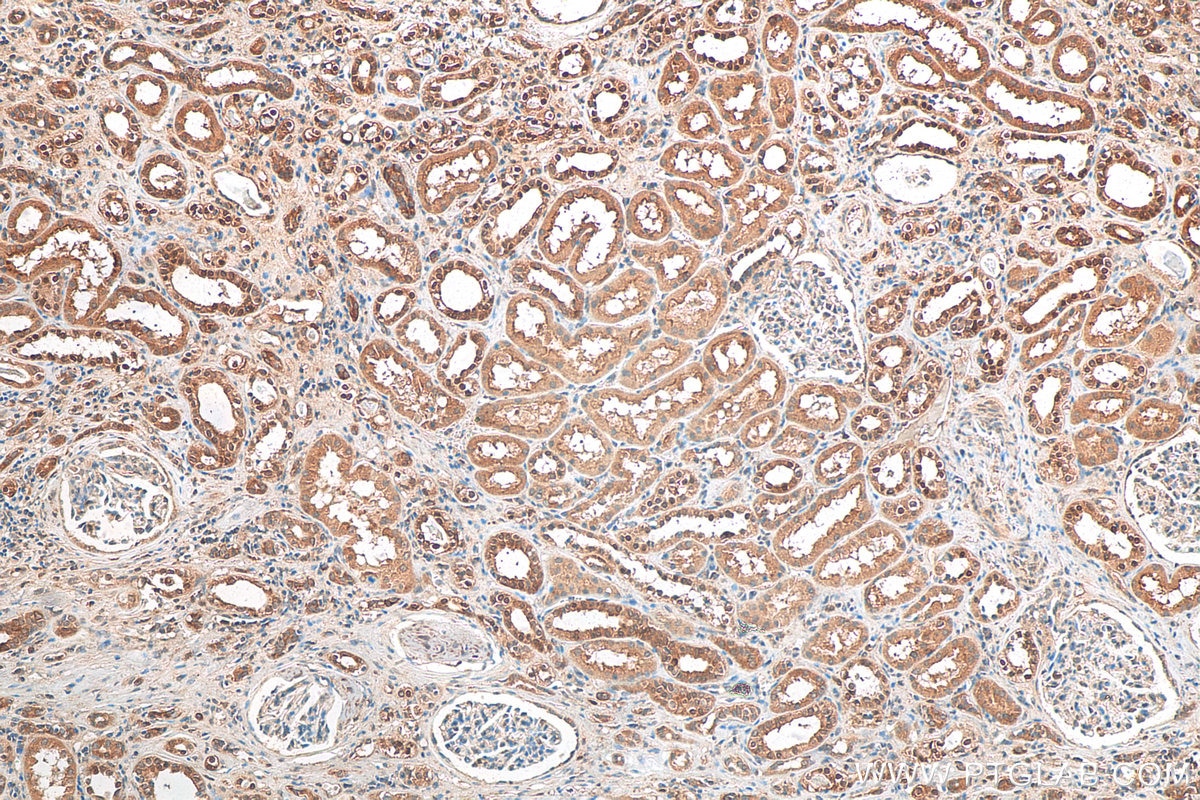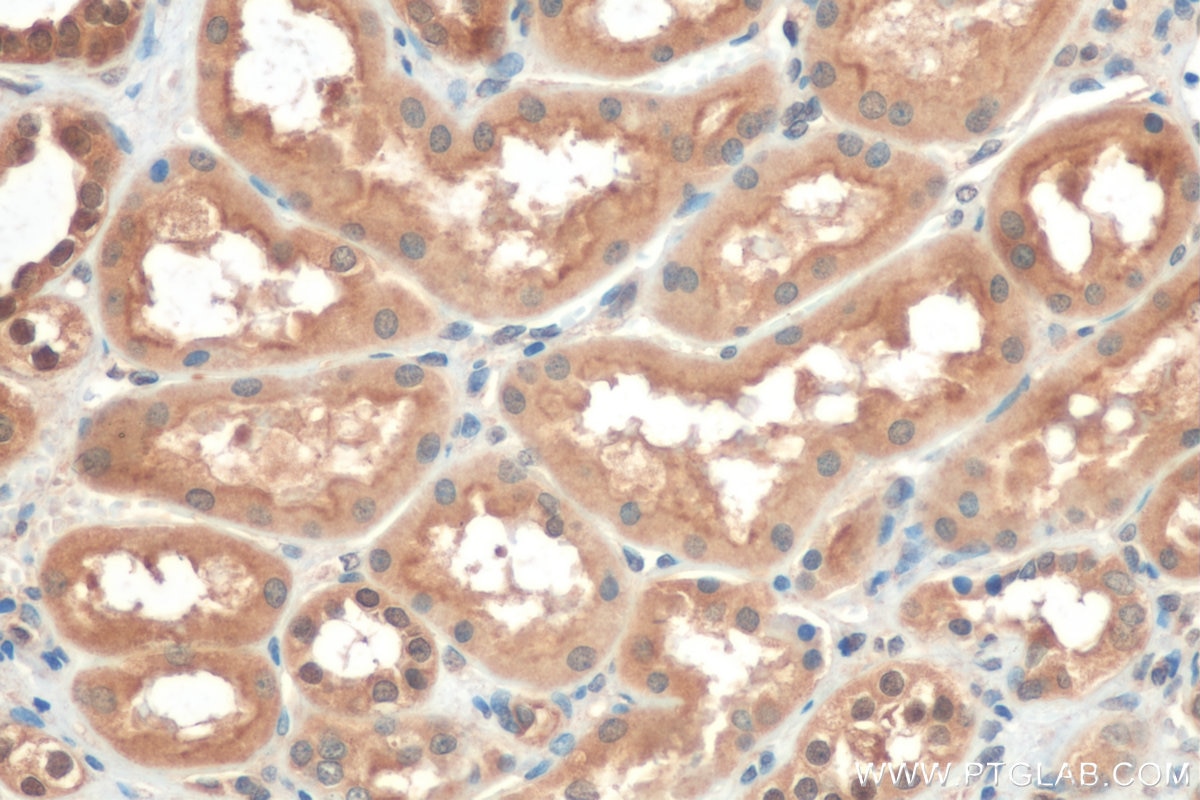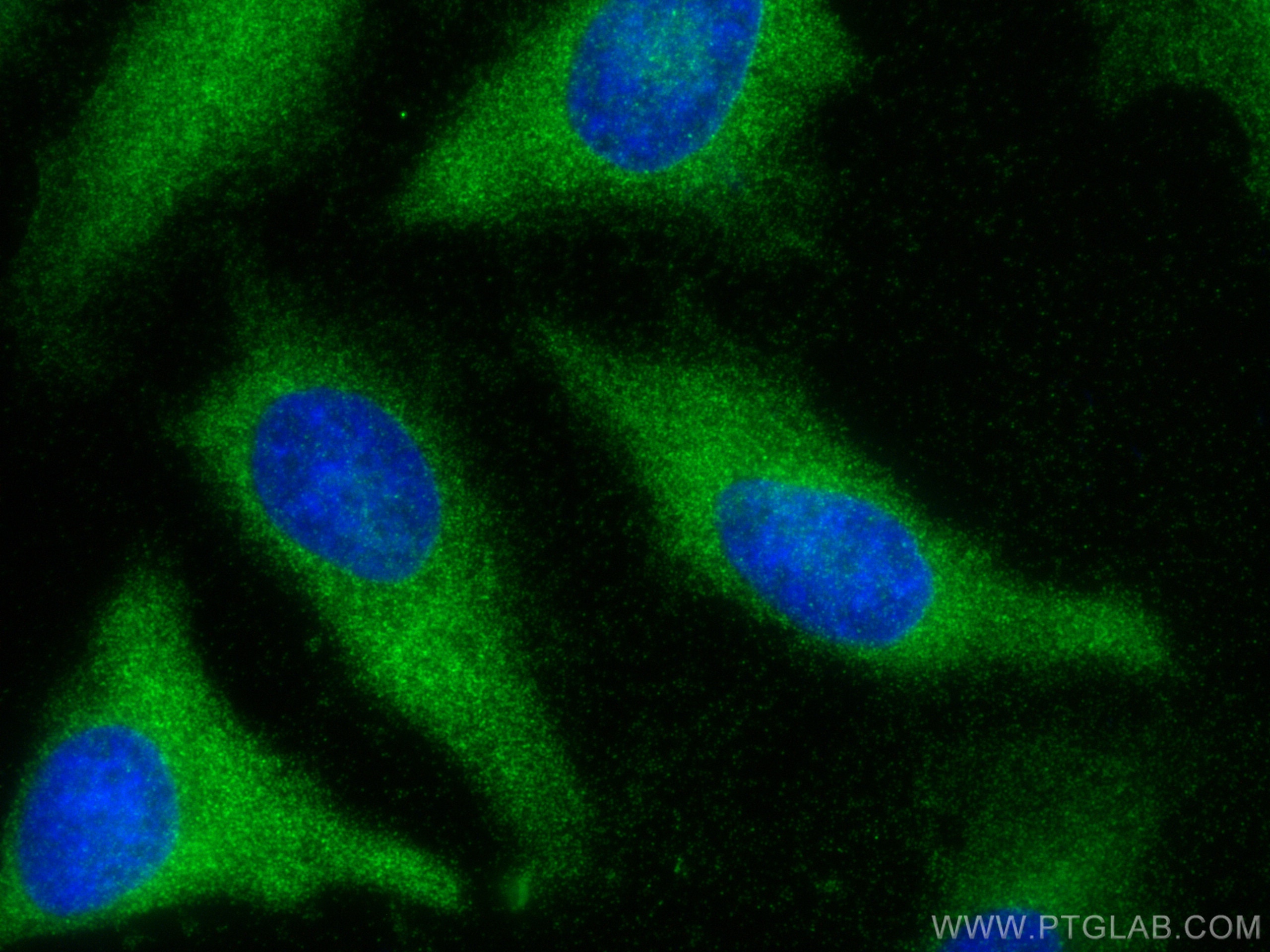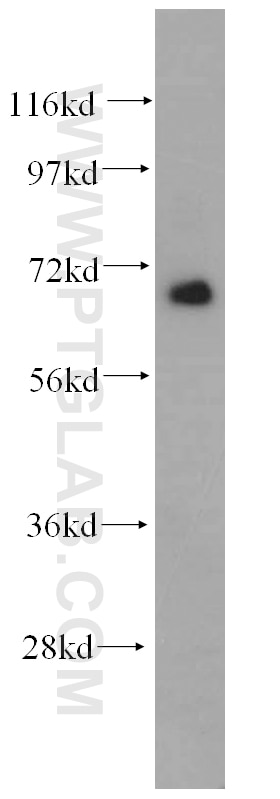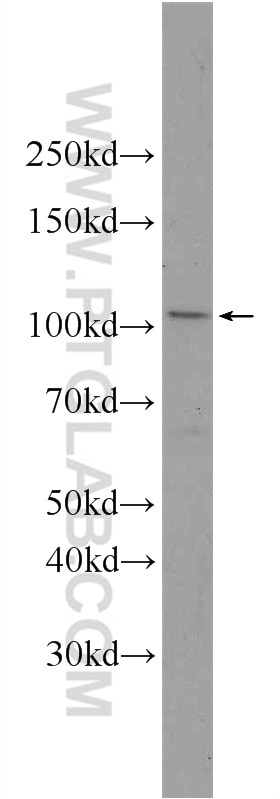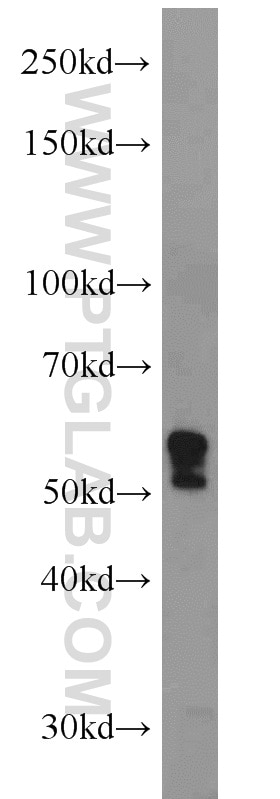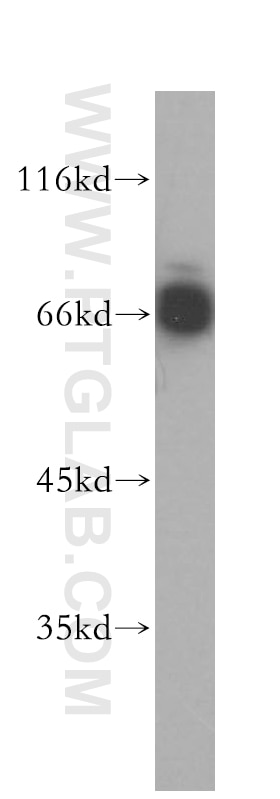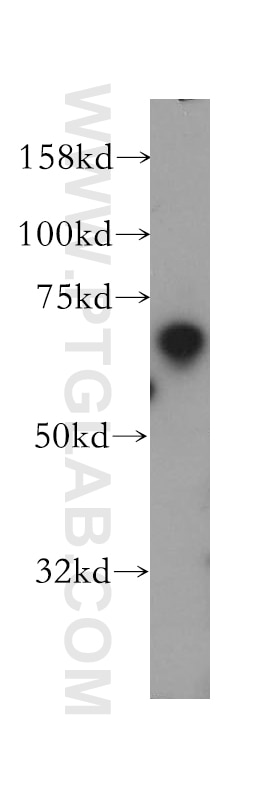- Phare
- Validé par KD/KO
Anticorps Polyclonal de lapin anti-TFEB
TFEB Polyclonal Antibody for WB, IP, IF, IHC, ELISA
Hôte / Isotype
Lapin / IgG
Réactivité testée
Humain, rat, souris et plus (3)
Applications
WB, IHC, IF/ICC, IP, CoIP, ELISA, Wes Immunoassay
Conjugaison
Non conjugué
177
N° de cat : 13372-1-AP
Synonymes
Galerie de données de validation
Applications testées
| Résultats positifs en WB | cellules A549, cellules C2C12, cellules HEK-293, cellules HeLa, cellules Jurkat, cellules NIH/3T3, cellules Raji, cellules RAW 264.7, tissu cardiaque de rat, tissu cardiaque de souris, tissu cérébral de rat, tissu placentaire humain |
| Résultats positifs en IP | cellules Raji, |
| Résultats positifs en IHC | tissu de carcinome à cellules rénales humain, il est suggéré de démasquer l'antigène avec un tampon de TE buffer pH 9.0; (*) À défaut, 'le démasquage de l'antigène peut être 'effectué avec un tampon citrate pH 6,0. |
| Résultats positifs en IF/ICC | cellules HeLa, |
Dilution recommandée
| Application | Dilution |
|---|---|
| Western Blot (WB) | WB : 1:1000-1:6000 |
| Immunoprécipitation (IP) | IP : 0.5-4.0 ug for 1.0-3.0 mg of total protein lysate |
| Immunohistochimie (IHC) | IHC : 1:50-1:500 |
| Immunofluorescence (IF)/ICC | IF/ICC : 1:50-1:500 |
| It is recommended that this reagent should be titrated in each testing system to obtain optimal results. | |
| Sample-dependent, check data in validation data gallery | |
Applications publiées
| KD/KO | See 27 publications below |
| WB | See 148 publications below |
| IHC | See 15 publications below |
| IF | See 80 publications below |
| IP | See 6 publications below |
| CoIP | See 2 publications below |
Informations sur le produit
13372-1-AP cible TFEB dans les applications de WB, IHC, IF/ICC, IP, CoIP, ELISA, Wes Immunoassay et montre une réactivité avec des échantillons Humain, rat, souris
| Réactivité | Humain, rat, souris |
| Réactivité citée | rat, bovin, Humain, poisson-zèbre, singe, souris |
| Hôte / Isotype | Lapin / IgG |
| Clonalité | Polyclonal |
| Type | Anticorps |
| Immunogène | TFEB Protéine recombinante Ag4194 |
| Nom complet | transcription factor EB |
| Masse moléculaire calculée | 476 aa, 53 kDa |
| Poids moléculaire observé | 65-70 kDa |
| Numéro d’acquisition GenBank | BC032448 |
| Symbole du gène | TFEB |
| Identification du gène (NCBI) | 7942 |
| Conjugaison | Non conjugué |
| Forme | Liquide |
| Méthode de purification | Purification par affinité contre l'antigène |
| Tampon de stockage | PBS avec azoture de sodium à 0,02 % et glycérol à 50 % pH 7,3 |
| Conditions de stockage | Stocker à -20°C. Stable pendant un an après l'expédition. L'aliquotage n'est pas nécessaire pour le stockage à -20oC Les 20ul contiennent 0,1% de BSA. |
Informations générales
Transcription factor EB(TFEB) is one of the transcription factors that contain a basic HLH-ZIP domain(for DNA binding ) and HLH and ZIP domains( for loigomerization). TFEB specifically recognizes and binds to E-box sequences, which required dimerization with itself or another MiT/TFE family member. It plays a role in T-cell-dependent antibody responses to activated CD4+ T-cells and thymus-dependent humoral immunity once associated with TFE3. It also activates lysosomal gene by binding the CLEAR-box sequence in the regulatory region. It involves in the signal transduction processes required for normal vascularization of the placenta. This is a rabbit polyclonal antibody raised against the full length of human TFEB. The calculated molecular weight of TFEB is 53 kDa, but modified TFEB is about 65-70 kDa (PMID: 12837690). TFEB mainly present in the cytoplasm (PubMed:23434374). Under aberrant lysosomal storage conditions, it translocates from the cytoplasm to the nucleus (PubMed:23434374). Fisetin increases the levels of TFEB localized in nuclei (PMID: 27112200).
Protocole
| Product Specific Protocols | |
|---|---|
| WB protocol for TFEB antibody 13372-1-AP | Download protocol |
| IHC protocol for TFEB antibody 13372-1-AP | Download protocol |
| IF protocol for TFEB antibody 13372-1-AP | Download protocol |
| IP protocol for TFEB antibody 13372-1-AP | Download protocol |
| Standard Protocols | |
|---|---|
| Click here to view our Standard Protocols |
Publications
| Species | Application | Title |
|---|---|---|
J Hazard Mater VPS41-mediated incomplete autophagy aggravates cadmium-induced apoptosis in mouse hepatocytes | ||
Cell Death Differ Lysine methylation of PPP1CA by the methyltransferase SUV39H2 disrupts TFEB-dependent autophagy and promotes intervertebral disc degeneration
| ||
Mol Psychiatry TFEB regulates lysosomal exocytosis of tau and its loss of function exacerbates tau pathology and spreading.
|
Avis
The reviews below have been submitted by verified Proteintech customers who received an incentive forproviding their feedback.
FH Shunbin (Verified Customer) (07-17-2023) | bands look specific, but blurry and multiple.
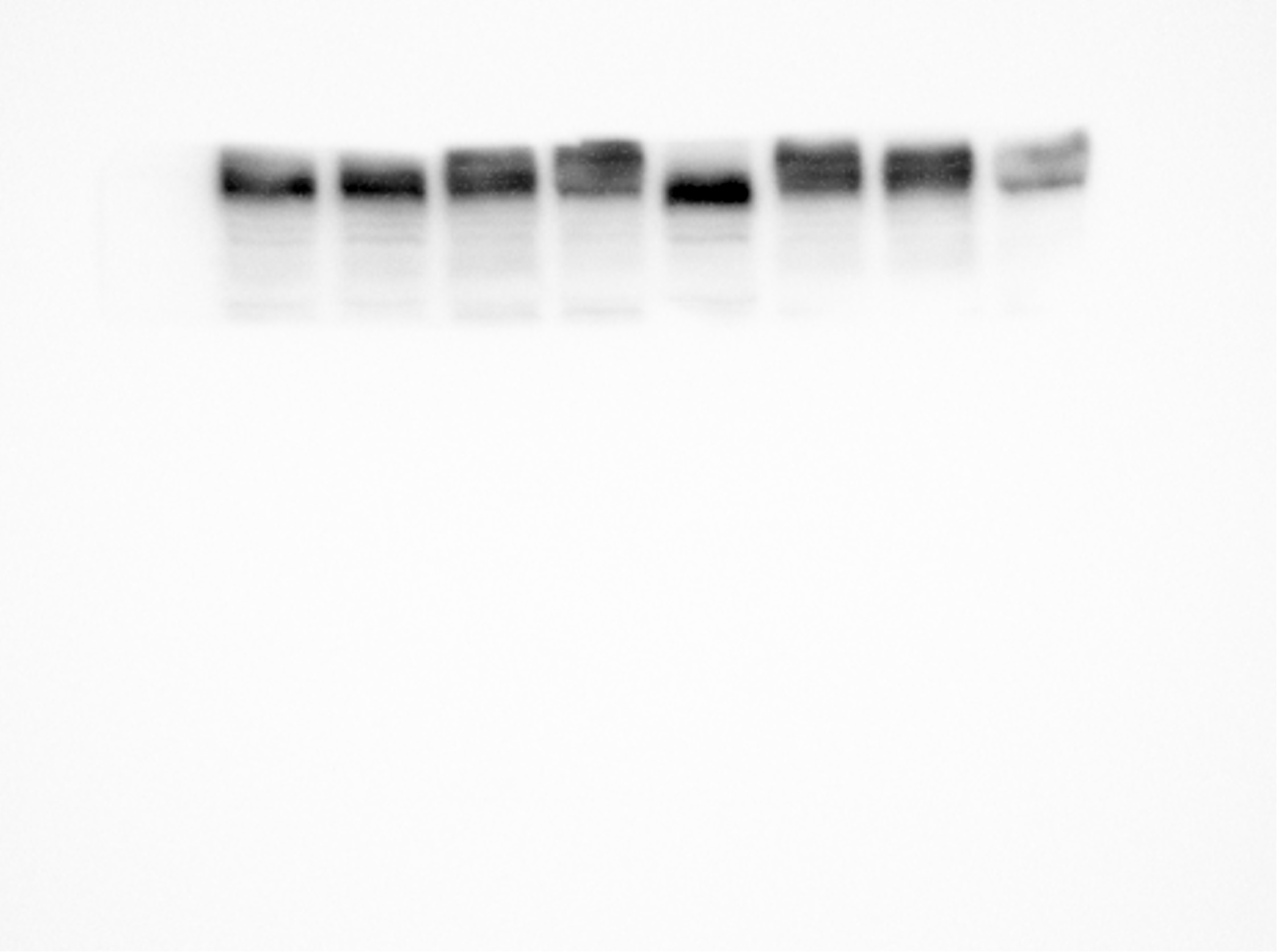 |
FH Weihao (Verified Customer) (04-11-2022) | Good antibody for mouse BMDM! not for human MDM 1:500 for IF 1:2000 for WB
|
FH Marina (Verified Customer) (11-22-2021) | 2 bands visible, unclear which is the right one, although size is ok-ish for both. Both bands are quite weak.
|
FH Tom (Verified Customer) (02-19-2021) | HEK293 lysate (10ug) subjected to SDS-PAGE and transferred to nitrocellullose. Membrane blocked in 5% BSA for 1 hour prior to incubation with antibody (1:1000 in block) overnight at 4 degrees. Band detected using anti-rabbit HRP secondary.
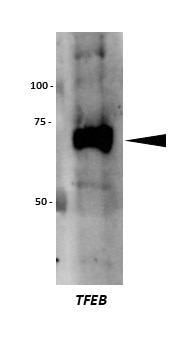 |
